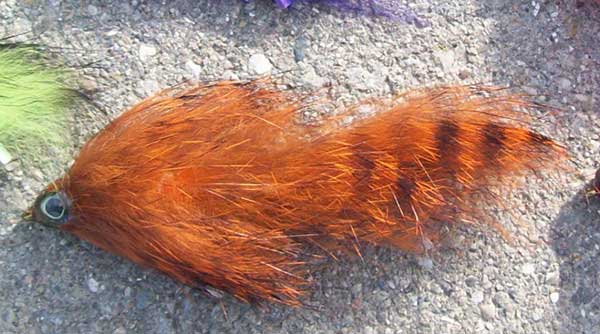By LOUIE STOUT
 While the majority of Michiana steelhead anglers looked dejectedly upon the swollen waters of the St. Joseph River last week, Mike Jones was busy catching fish. The Girty Fly gets em!
While the majority of Michiana steelhead anglers looked dejectedly upon the swollen waters of the St. Joseph River last week, Mike Jones was busy catching fish. The Girty Fly gets em!
High, muddy water makes for tough fishing conditions, but the Mishawaka angler knew the steelhead didnt care. Theyd still be on the gravel beds performing their spawning ritual.
Take Tuesday, for example, when Jones landed five spawners after work despite the lousy river conditions.
Diehard angler? Of course. But then, theres more to the story than that.
Jones is an idea guy. A fly tier of sorts, and right now, the creator of a pretty hot fly.
His Girty creation has probably accounted for more steelhead per hour than any other lure used by other anglers this spring.
The idea came to me last fall when I was backtrolling with Hotn Tots, Jones recalled. I thought, why not create a fly that does the same thing? I developed it over the winter and its exceeded my expectations.
Jones acknowledges there are days when other bait and lure presentations will be better. But during the past three weeks, the Girty fly has been spectacular.
He has averaged 5 to 8 steelhead over three-hour periods after work. On his best day, he landed 14 and had five others on.
And not one fish was foul hooked, he insisted.
The 3 to 4 1/2-inch fly is a hybrid between a sculpin and a streamer, but is tied with rabbit hair and flash material. Its fastened to a fish-like head with eyes, swims like a leech but resembles a baitfish.
I got to looking around on the internet at flies and incorporated something I saw with my own ideas, he offered. Im a self-taught fly tier who gets satisfaction from catching fish on stuff I make.
Fishing the hard current isnt easy with a fly. Under calm conditions hell fish traditional fly tackle, but while the river is at flood stage, he rigs his secret weapon on a spinning outfit with a pair of two-way swivels. One swivel slides on the main fishing line and a leader tied to a bell sinker that is tied to four- to five-inch dropper line connected to the sliding swivel.
A four-foot leader with the fly tied on the end is attached to the other two-way connected to the main fishing line.
The bell sinker ticks the bottom as the fly swings with the current. Because of the fast water this week, he had to go to a 1-ounce sinker but uses ½ ounce under normal conditions.
I always experiment with sinker weights until I find the right one that ticks the bottom but isnt hanging up, he offered.
His presentation is slightly different, too. While most Steelheaders cast into the river and let the current walk it down to about 9 oclock, he casts from the bank to about 10 oclock and feathers it along the bottom toward the bank.
Theres no bow in the line and I can cover water more effectively than most guys, he described. While they arent sure when their bait is stopped by a fish, rock or snag, I can tell. There is no doubt about it when they hit.
He also makes short casts, closes the bail on his spinning reel and loops about 15 inches of slack line in his hand.
When they grab the fly I let go of the slack, which lets them get turned sideways before I set the hook, he explained. Thats what the west coast fishermen do and youll lose fewer fish that way.
But its the fly and the way it aggravates the fish that gets him the bites. He says hes out-fishing anglers around him who quickly want to buy his flies.
In fact, one guy paid $120 for the handful he had with him recently. Another guy, on a different day, paid him $80 for the ones he had.
They set the price and Im not soliciting business, he said. If they want them, Ill sell what I have. I use the money to buy more material to create new fly ideas and help feed my fly-tying addiction. I dont want a second job.